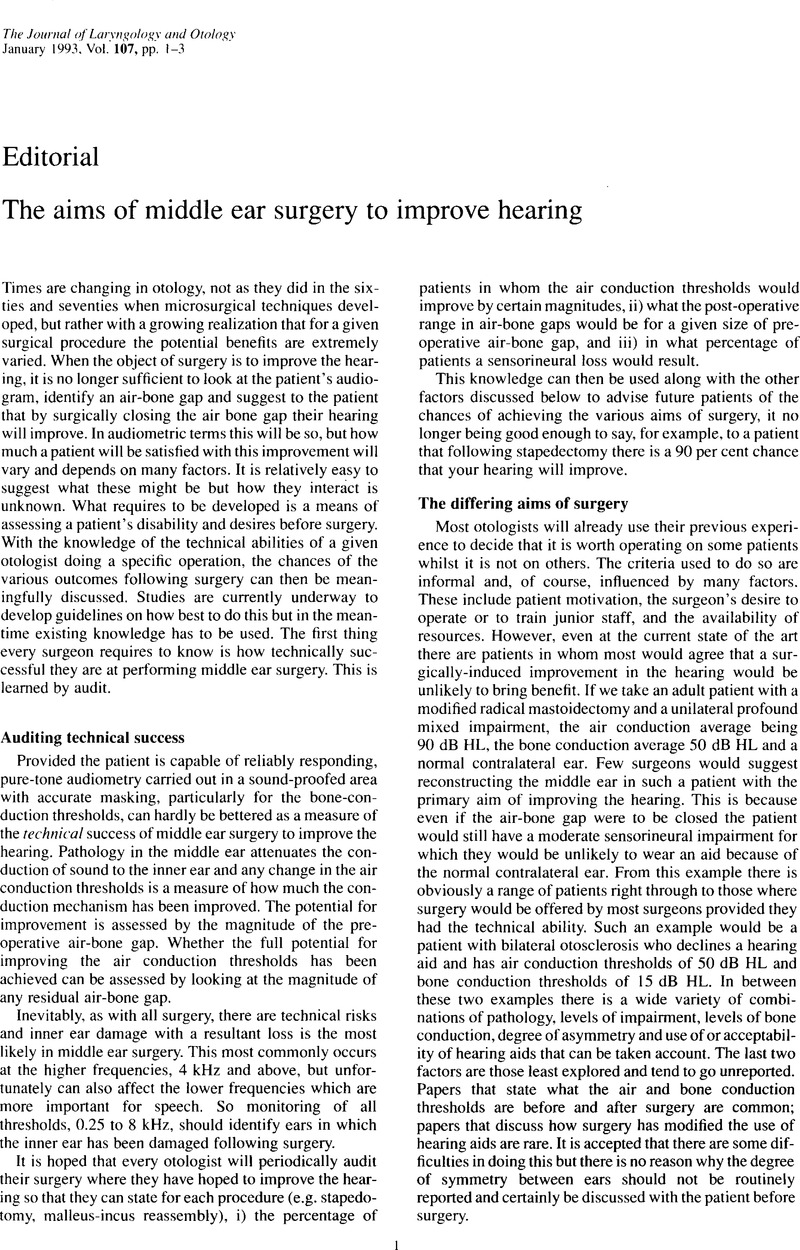Crossref Citations
This article has been cited by the following publications. This list is generated based on data provided by Crossref.
Ramsden, Richard
1993.
Patient satisfaction in ear surgery.
The Journal of Laryngology & Otology,
Vol. 107,
Issue. 4,
p.
385.
Ravikumar, A
Chowdhery, A
and
Senthil, K.
2005.
Hearing benefit in middle ear reconstructive surgery: A comparative study of the current methods.
Indian Journal of Otolaryngology and Head and Neck Surgery,
Vol. 57,
Issue. 3,
p.
210.
Korsten-Meijer, Astrid G. W.
Wit, Hero P.
and
Albers, Frans W. J.
2006.
Evaluation of the relation between audiometric and psychometric measures of hearing after tympanoplasty.
European Archives of Oto-Rhino-Laryngology,
Vol. 263,
Issue. 3,
p.
256.
Gupta, Priyanshi
Ojha, Tarun
Bansal, Monika
Trivedi, Bhargavi
Sharma, Kanika
and
Chhabra, Biban
2022.
PREDICTING THE SUBJECTIVE HEARING OUTCOME IN TYPE I TYMPANOPLASTY USING BELFAST 15/30DB RULE OF THUMB..
INTERNATIONAL JOURNAL OF SCIENTIFIC RESEARCH,
p.
53.



